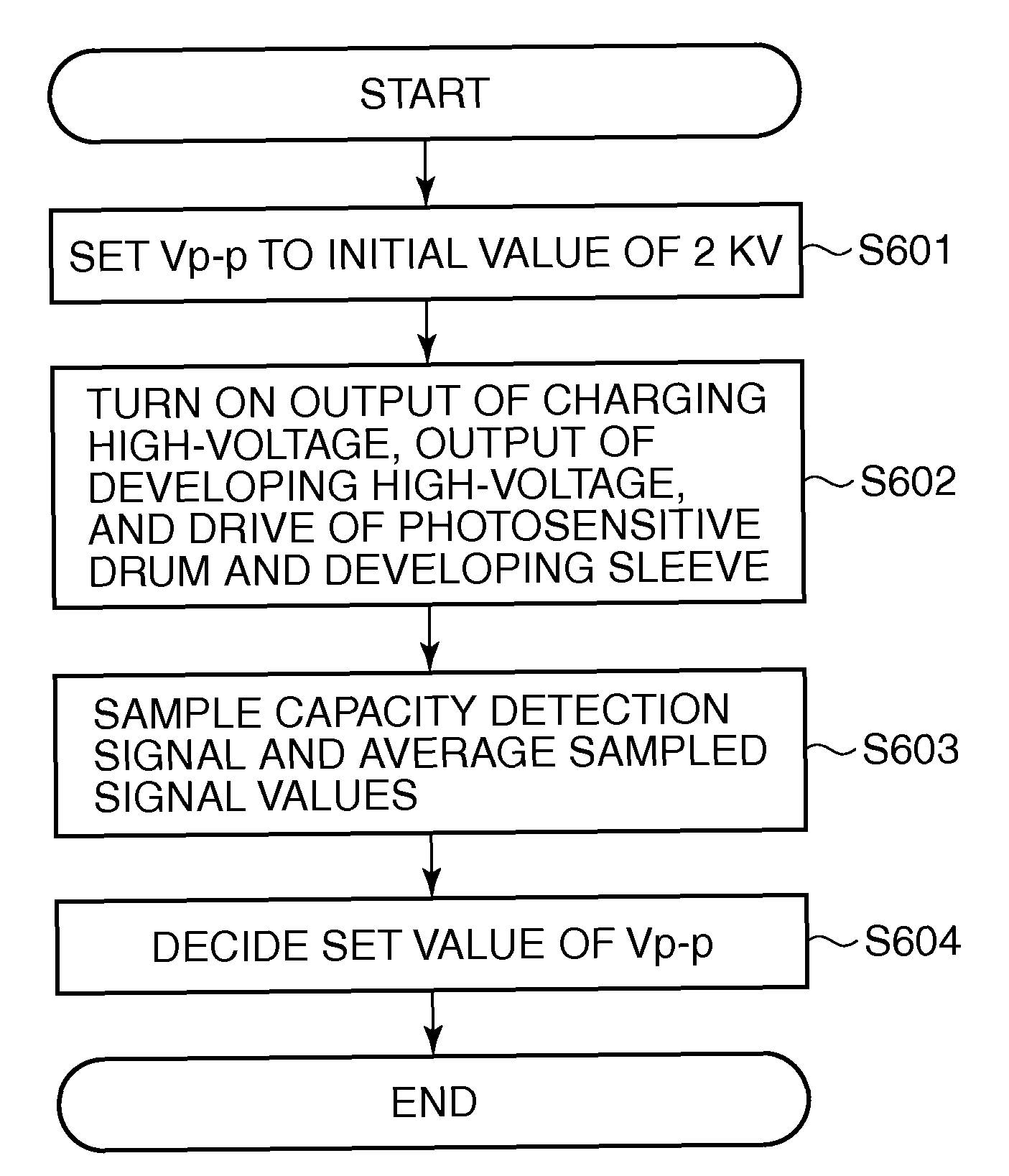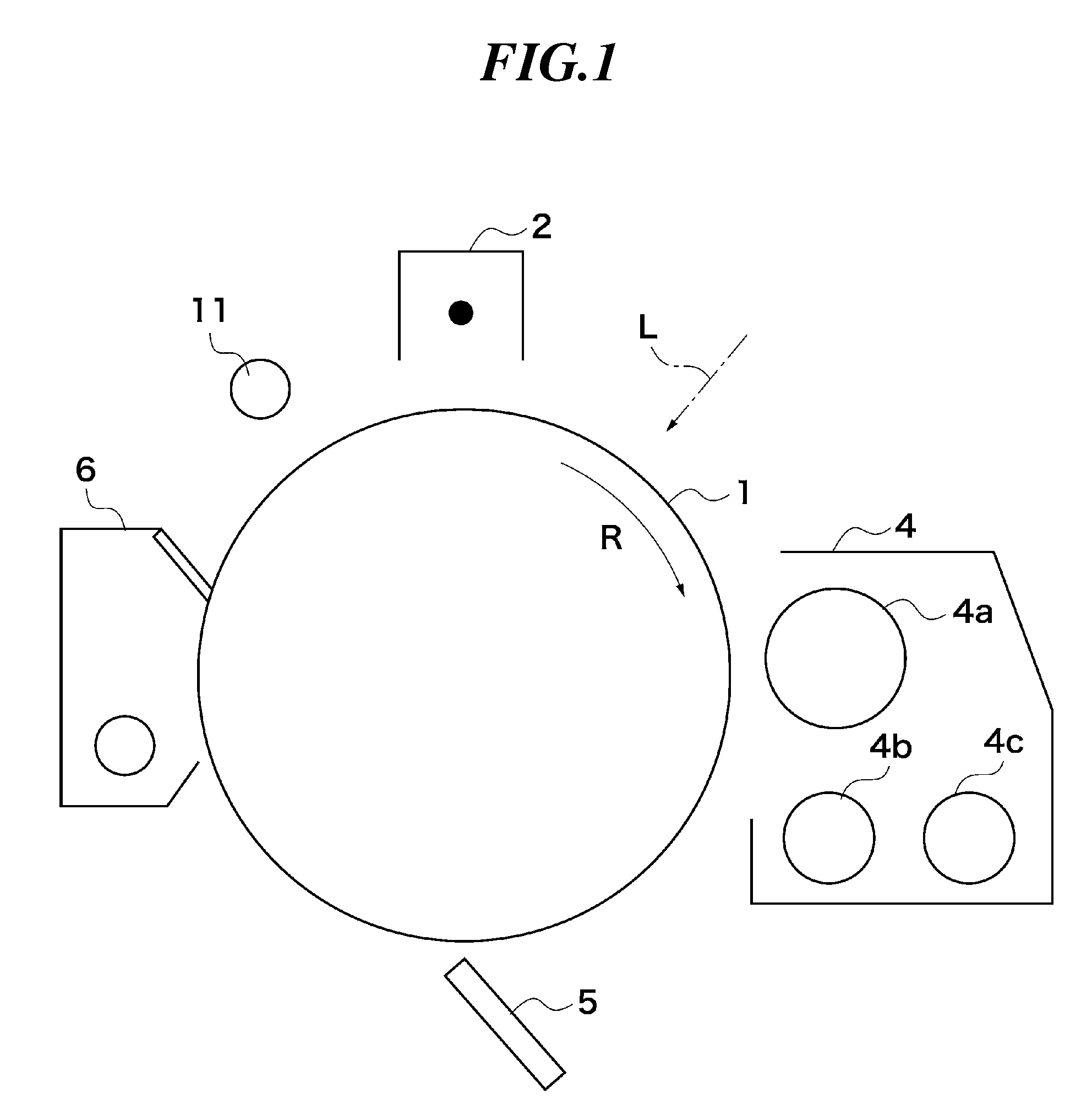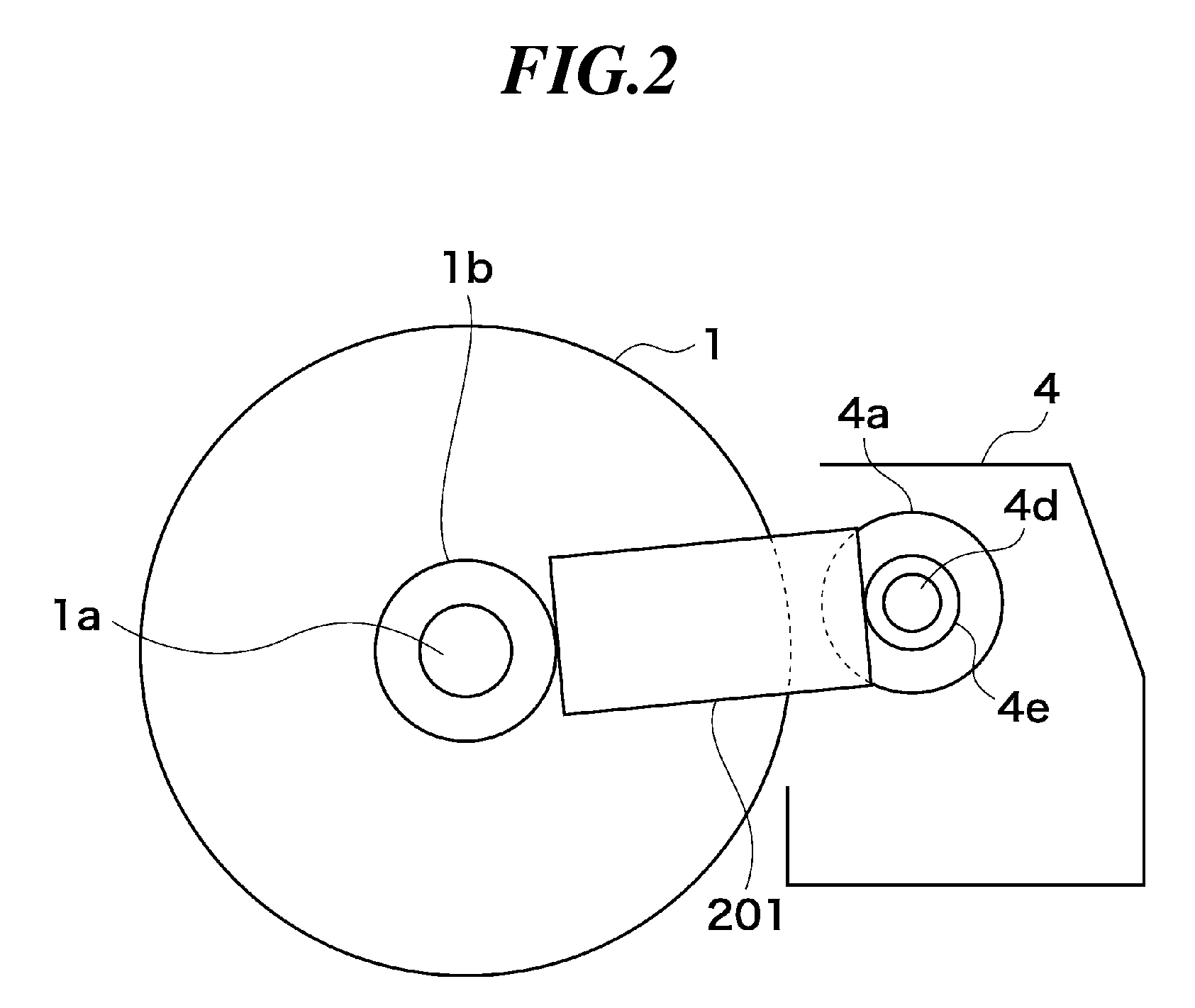Image forming apparatus and control method therefor
a technology of image forming apparatus and control method, which is applied in the direction of electrographic process apparatus, instruments, corona discharge, etc., can solve the problems of reducing the development ability, affecting image quality, and prone to image defects, so as to reduce the occurrence of image defects, maintain the density constant, and improve the development ability
- Summary
- Abstract
- Description
- Claims
- Application Information
AI Technical Summary
Benefits of technology
Problems solved by technology
Method used
Image
Examples
first embodiment
[0042]FIG. 1 shows the construction of and around a photosensitive drum and a developing device of an image forming apparatus according to a first embodiment of this invention.
[0043]As shown in FIG. 1, the image forming apparatus includes a photosensitive drum 1 around which a primary charger 2, a developing device 4, a transfer charger 5, a cleaner 6, and a preexposure device 11 are disposed. The image forming apparatus performs electrophotographic image formation in which an electrostatic latent image formed on the photosensitive drum 1 is developed into a toner image, which is then transferred onto a sheet. The photosensitive drum 1 is an image carrier carrying thereon an electrostatic latent image and rotatably driven by a drive mechanism (not shown) in a direction of arrow R. In a charging process, the photosensitive drum 1 is uniformly charged at its surface by the primary charger 2. In an exposure process, the surface of the photosensitive drum 1 is exposed to laser light L e...
second embodiment
[0077]A second embodiment of this invention is different from the first embodiment in that the developing AC-bias voltage is not set in accordance with an instruction from the CPU on the control circuit board, but is set by means of feedback control by the developing high-voltage circuit board. In other respects, this embodiment is the same as the first embodiment (FIGS. 1 and 2) and hence a duplicative description will be omitted.
[0078]FIG. 7 shows in block diagram the construction of a developing high-voltage circuit board and a control circuit board of an image forming apparatus of this embodiment. FIG. 8 shows in block diagram the detailed construction of the AC high-voltage drive circuit in FIG. 7. It should be noted that the construction in FIG. 7 is an example of the application unit, the detection unit, and the control unit of this invention.
[0079]As shown in FIGS. 7 and 8, the image forming apparatus includes a developing high-voltage circuit board 700 and a control circuit...
third embodiment
[0086]A third embodiment of this invention is different from the first embodiment in that the Vp-p set value of the developing AC-bias voltage is changed by a user or a service personnel by operating an operation unit. In other respects, this embodiment is the same as the first embodiment (FIGS. 1 and 2), and hence a duplicative description will be omitted.
[0087]FIG. 9 shows in block diagram the construction of a developing high-voltage circuit board and a control circuit board of an image forming apparatus of this embodiment. It should be noted that the arrangement shown in FIG. 9 is an example of the application unit, detection unit, control unit, display unit, and setting unit of this invention.
[0088]As shown in FIG. 9, the image forming apparatus includes a developing high-voltage circuit board 900 and a control circuit board 905. The developing high-voltage circuit board 900 is mounted with an AC high-voltage drive circuit 901 (application unit), an AC transformer 902, a DC hig...
PUM
 Login to View More
Login to View More Abstract
Description
Claims
Application Information
 Login to View More
Login to View More - R&D
- Intellectual Property
- Life Sciences
- Materials
- Tech Scout
- Unparalleled Data Quality
- Higher Quality Content
- 60% Fewer Hallucinations
Browse by: Latest US Patents, China's latest patents, Technical Efficacy Thesaurus, Application Domain, Technology Topic, Popular Technical Reports.
© 2025 PatSnap. All rights reserved.Legal|Privacy policy|Modern Slavery Act Transparency Statement|Sitemap|About US| Contact US: help@patsnap.com



